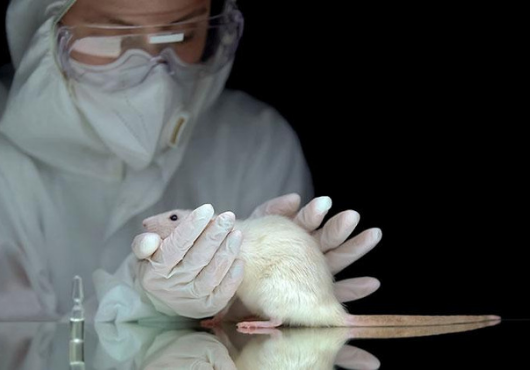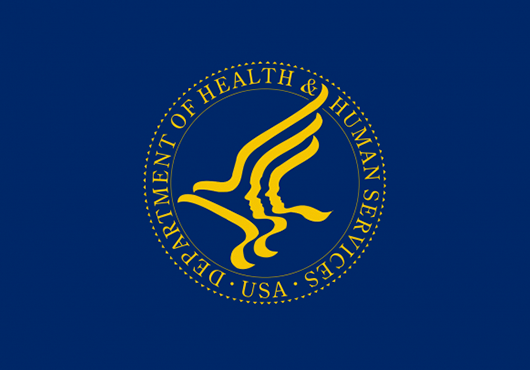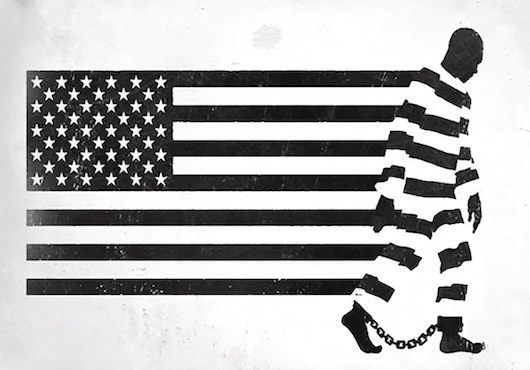
Research involving human subjects should redeem the human and material costs of its investigation with commensurate gains of social and scientific value. Unfortunately, many studies fail to meet this obligation, as documented by a growing body of literature. For example, Chalmers et al. have described how poor planning and prioritization of research questions can lead to duplicative and unnecessary studies. [1] Ioannidis et al. have described how inappropriate study design, conduct, or analysis can lead to misleading or uninformative study results. [2] Gelinas et al. have described how a lack of coordination among studies within the same institution or geographic region can undermine efforts to recruit participants, and thereby result in terminated or underpowered studies. [3]
According to one estimate, as much as 85 percent of research may be wasteful, in the sense that it fails to advance scientific understanding or provide a social return on the resources invested. [4] But even if the actual amount of waste is a fraction of that estimate, it would still be cause for concern. While some low-value or wasteful research may be an ineluctable feature of the scientific process, the ethical foundations, and integrity of the research enterprise demand that steps be taken to minimize it.
Research ethics committees seem well placed to help minimize research waste. As Salman et al. have argued, these committees could exercise their authority to approve or reject studies based on their judgment of whether a study is wasteful. [5] However, there are practical challenges that need to be overcome if ethics committees are to effectively take on this task. In what follows, I discuss some of these challenges and possible strategies for overcoming them.
The Guidelines and the Reality
Multiple guidelines for ethical research state that ethics approval of a study should require (1) sufficient scientific validity to answer the primary research question; and (2) sufficient scientific and social value to balance the risks, burdens, and costs. [6], [7] The reasoning behind these requirements is relatively straightforward: Studies that either lack sufficient validity or do not address questions of scientific or social importance expose their participants to risks and burdens without advancing science or contributing anything of social value.
Presumably, then, the task of minimizing research waste should already be a part of ethical review. However, empirical investigations of ethics committee behavior suggest a considerable gap between ethical guidelines and actual practice. For example, Klitzman’s extensive interviews with research ethics committee members revealed that some do not regard scientific validity or value as within the committee’s purview. [8] He also found that when committees did critique the science of protocols, this frequently led to conflict with the investigators. [8] Burris and Moss similarly found that critiques of protocols’ scientific quality were a source of animosity between investigators and ethics committees. [9] While conflict between ethics committees and investigators is not inherently problematic, too much conflict may explain why some committees have backed away from evaluating the science of protocols. Persistent conflict can also undermine trust between these parties, who should instead be allies in promoting good research.
Burris and Moss also observed frustration among research investigators, who contended that ethics committees spend too much time on the minutiae of wording in informed consent forms. [9] This perception is shared by Gunsalus et al., who argue that the entire process of ethics review has become too bureaucratic and legalistic in focus, at the expense of addressing substantive ethical issues of risk, benefit, and value. [10] At the same time, Gunsalus et al. express concern about “mission creep”—that is, an imprudent expansion of committees’ responsibilities that will likely increase the delays and costs of research.
These data and arguments suggest that ethics committees are in a difficult position vis-à-vis research waste. On the one hand, the guidelines are clear that they should be making a determination about the scientific and social value of a protocol. On the other hand, there is frequent push-back from the scientific community about these value judgments. There is also little available guidance about how ethics committees should assess study value, and committees do not necessarily include experts who have the requisite knowledge and experience to make informed or reliable judgments about the validity or value of the scientific investigation.
Finally, as they are presently constituted, ethics committee will rarely (if ever) have the time or resources to conduct their own research about scientific methodology, current evidence reviews, or other ongoing studies—which presumably they would need to do if they are to be making informed judgments about whether a study is wasteful.
Tools of Communication
These last two challenges—lacking scientific expertise and lacking time to conduct evidence and methodological reviews—illuminate pathways to improving the situation, and to places where support can be offered to help ethics committees fulfill their social mission. If it is implausible to expect that ethics committees will possess the necessary scientific expertise or time required to conduct an independent evidence review, then it may be incumbent upon other research stakeholders—such as funding agencies, sponsors, or investigators—to assist in these tasks.
For example, Salman et al. recommend that ethics committees should request a relevant systematic review with every protocol in order to assess whether the study question may have already been adequately answered. [5] Committees could request a summary of information from public trial registries, such as ClinicalTrials.gov, to assess whether there are other active studies that may be asking similar questions or competing for recruitment. There are also systematic approaches to visually summarizing portfolios of research activity, which committees could use to better understand how a proposed study contributes to its broader research context. [11] Committees could request that funders, sponsors, or investigators provide them with such visual summaries (like that depicted in Figure 1) as a complement and aid to understand systematic or narrative evidence reviews.
Figure 1

Figure 1. Accumulating Evidence and Research Organization graph for cholesteryl ester transfer protein inhibitor trials. Nodes correspond to published reports or registration records and are arranged by the date of publication along the x-axis and stratified by drug and primary study endpoint along the y-axis. Node size corresponds to the number of research subjects. Green nodes reported a positive outcome; red nodes reported a negative outcome; yellow nodes reported a “mixed” outcome (e.g., promising efficacy, but troubling safety); grey nodes are completed studies (according to ClinicaTrials.gov), but no study outcome information is available. This method of data visualization can provide a comprehensive overview of the trials in a particular area of research which, if presented to an IRB member along with a protocol for a new study, could help to sharpen a judgment about the likely scientific or social value.
These various modalities of evidence assessment and communication can also be used by investigators to capture and convey more of the reasoning behind a proposed line of research, thereby clarifying why the proposed study is valuable. Folding these tools into the process of ethics review could also help to resolve some of the tension and animosity between investigators and ethics committees. Indeed, it is reasonable to think that a common set of documents and tools summarizing the state of evidence and scientific activity could reduce confusion and misunderstandings. It could also focus and structure the communication between parties—ideally steering those communications away from trivial or bureaucratic concerns toward a more substantive discussion of study value.
Lastly, funding agencies, sponsors, and investigators are likely to have already completed or have access to the data analyses necessary for constructing a systematic review, registered trial summary, or portfolio visualization. Providing this information to the ethics committee, in order to help them understand and assess the value of the proposed study, should therefore require little additional time and resources.
A Path Forward
Reducing research waste is a complicated problem that will likely require many different research stakeholders to re-think policies and modify their behavior. Ethics committees are just one piece of this complex puzzle. Funders, sponsors, investigators, and regulators also have critical roles to play in reducing waste and helping ethics committees to fulfill their social mission. Indeed, encouraging ethics committees to embrace their authority to adjudicate study value is unlikely to be effective unless they receive support and buy-in from investigators and other stakeholders, whose expertise and perspective is needed to support and inform judgments of study value.
Yet, the goal of increasing value across the research enterprise is something that every stakeholder can get behind. Everyone wins when there are fewer unnecessary, unpublished, or underpowered trials. New tools to improve the quality of communication therefore represent an important step forward.
Spencer Hey, PhD, is faculty at the HMS Center for Bioethics. He can be reached at shey (at) bwh.harvard.edu.
[1] Chalmers, Iain, Michael B. Bracken, Ben Djulbegovic, Silvio Garattini, Jonathan Grant, A. Metin Gülmezoglu, David W. Howells, John P. A. Ioannidis, and Sandy Oliver. "How to Increase Value and Reduce Waste When Research Priorities are Set." The Lancet 383, no. 9912 (2014): 156-65. https://doi.org/10.1016/s0140-6736(13)62229-1.
[2] Ioannidis, John P. A., Sander Greenland, Mark A. Hlatky, Muin J. Khoury, Malcolm R. Macleod, David Moher, Kenneth F. Schulz, and Robert Tibshirani. "Increasing Value and Reducing Waste in Research Design, Conduct, and Analysis." The Lancet 383, no. 9912 (2014): 166-75. https://doi.org/10.1016/s0140-6736(13)62227-8.
[3] Gelinas, Luke, Holly Fernandez Lynch, Barbara E. Bierer, and I. Glenn Cohen. "When Clinical Trials Compete: Prioritising Study Recruitment." Journal of Medical Ethics 43, no. 12 (2017): 803-09. https://doi.org/10.1136/medethics-2016-103680.
[4] Chalmers, Iain, and Paul Glasziou. "Avoidable Waste in the Production and Reporting of Research Evidence." The Lancet 374, no. 9683 (2009): 86-89. https://doi.org/10.1016/S0140-6736(09)60329-9.
[5] Salman, Rustam Al-Shahi, Elaine Beller, Jonathan Kagan, Elina Hemminki, Robert S. Phillips, Julian Savulescu, Malcolm Macleod, Janet Wisely, and Iain Chalmers. "Increasing Value and Reducing Waste in Biomedical Research Regulation and Management." The Lancet 383, no. 9912 (2014): 176-85. https://doi.org/10.1016/s0140-6736(13)62297-7
[6] World Health Organization. International Ethical Guidelines for Health-Related Research Involving Humans. Geneva: Council for International Organizations of Medical Sciences, 2016.
[7] National Commission for the Protection of Human Subjects of Biomedical and Behavioral Research. The Belmont Report: Ethical Principles and Guidelines for the Protection of Human Subjects of Research. US Government Printing Office, 1978.
[8] Klitzman, Robert L. The Ethics Police? The Struggle to Make Human Research Safe (Oxford: Oxford University Press, 2015).
[9] Burris, Scott, and Kathryn Moss. "U. S. Health Researchers Review Their Ethics Review Boards: A Qualitative Study." Journal of Empirical Research on Human Research Ethics 1, no. 2 (2006): 39-58. https://doi.org/10.1525/jer.2006.1.2.39.
[10] Gunsalus, C. K., Edward M. Bruner, Nicholas C. Burbules, Leon Dash, Matthew Finkin, Joseph P. Goldberg, William T. Greenough, Gregory A. Miller, and Michael G. Pratt. "Mission Creep in the IRB World." Science 312, no. 5779 (2006): 1441. https://doi.org/10.1126/science.1121479
[11] Hey, Spencer, Charles M. Heilig, and Charles Weijer. "Accumulating Evidence and Research Organization (AERO) Model: A New Tool for Representing, Analyzing, and Planning a Translational Research Program." Trials 14, no. 1 (2013): 159. https://doi.org/10.1186/1745-6215-14-159


